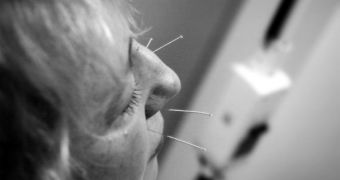A recent study carried by the National Institutes of Health (NIH) and the US Centers for Disease Control and Prevention (CDC) shows that more than 38 percent of all US health care system patients underwent or are still actively following a complimentary or alternative treatment, to the standard one, as prescribed by authorized physicians. Four in ten adults have tried acupuncture, massage, chiropractic therapies and meditation, among other things, as methods of alleviating their pain.
Though it's still regarded as an unconventional method of treatment, acupuncture has been around for the better part of 6,000 years, well before “Western” medicine appeared. Ancient texts, portraying in full detail the internal make-up of the human body's life energy channels, still offer a portal into the world of needle therapy to date. The reason why most people employ it is because of its lack of side effects, which is more than can be said about most drugs in pharmacies today.
Massages are usually employed to relieve chronic back pains, as well as joint swellings and arthritis. Proponents of this practice say that there are no side-effects to what they are doing, and that patients feel real comfort after leaving sessions. This type of therapy is not regularly used by itself, but, rather, as a complement to other types of therapy.
"As I look at this data, what I'm most struck with is how much people are turning to CAM (complementary and alternative medicine) approaches as part of the management of chronic pain conditions, particularly chronic back pain, but also neck pain and musculoskeletal pain and headache. And from my days as an internist seeing patients in my office, I know that these are conditions that are hard to manage and tough to treat," says NIH National Center for Complementary and Alternative Medicine director, Dr. Josephine Briggs.
The latest estimates were drawn from a nationwide study, featuring the answers of some 23,000 adults and 9,500 children, to questions regarding their medical habits and the kinds of treatments they followed when seeking to treat their afflictions.

 14 DAY TRIAL //
14 DAY TRIAL //